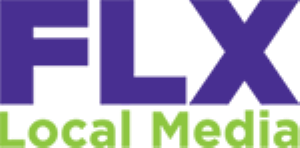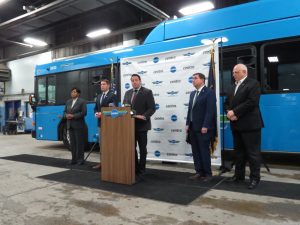The newly acted $2.2 trillion stimulus law has several features that will help small businesses stay afloat and keep their employees during the coronavirus crisis. Congress passed the Coronavirus Aid, Relief, and Economic Security (CARES) Act on March 27 and President Trump signed it into law. U.S. Small Business Administration (SBA) Administrator Jovita Carranza and U.S. […]
Get Instant Access to This Article
Become a Central New York Business Journal subscriber and get immediate access to all of our subscriber-only content and much more.
- Critical Central New York business news and analysis updated daily.
- Immediate access to all subscriber-only content on our website.
- Get a year's worth of the Print Edition of The Central New York Business Journal.
- Special Feature Publications such as the Book of Lists and Revitalize Greater Binghamton, Mohawk Valley, and Syracuse Magazines
Click here to purchase a paywall bypass link for this article.
 The newly acted $2.2 trillion stimulus law has several features that will help small businesses stay afloat and keep their employees during the coronavirus crisis.
The newly acted $2.2 trillion stimulus law has several features that will help small businesses stay afloat and keep their employees during the coronavirus crisis.
Congress passed the Coronavirus Aid, Relief, and Economic Security (CARES) Act on March 27 and President Trump signed it into law.
U.S. Small Business Administration (SBA) Administrator Jovita Carranza and U.S. Treasury Secretary Steven T. Mnuchin on March 31 announced that the SBA and the Treasury Department have started a “robust mobilization effort of banks and other lending institutions to provide small businesses with the capital they need.”
For small businesses, the key feature of the CARES Act is the $349 billion Paycheck Protection Program, which is specifically designed to help small businesses keep their workforce employed. It will allow businesses to receive low-interest loans, fully guaranteed by the SBA, through participating banks, which will be forgiven if they meet certain requirements.
The new loan program will be available retroactively from Feb. 15, 2020, so employers can rehire their recently laid-off employees through June 30 of this year.
Here is how it works, according to the SBA:
• Who is eligible?: All small businesses, including nonprofits, veterans’ organizations, tribal concerns, sole proprietorships, self-employed individuals, and independent contractors, with 500 or fewer employees, or no greater than the number of employees set by the SBA as the size standard for certain industries
• Maximum loan amount: $10 million
• Loan forgiveness: if proceeds are used for payroll costs and other designated business operating expenses in the eight weeks following the date of loan origination. Note: Because the agency expects an avalanche of companies and people applying, it’s anticipating that no more than 25 percent of the forgiven loan amount may be spent on non-payroll costs.
All loans under this program will have the following features:
• Interest rate of 0.5 percent
• Maturity of 2 years
• First payment deferred for six months
• 100-percent guarantee by SBA
• No collateral
• No personal guarantees
• No borrower or lender fees payable to SBA
The Treasury Department and SBA said they expect to have this program up and running on Friday, April 3, so that businesses can go to a participating SBA 7(a) loan program lender, bank, or credit union to apply for a loan, and “be approved on the same day.”
“Our goal is to position lenders as the single point-of-contact for small businesses — the application, loan processing, and disbursement of funds will all be administered at the community level,” Carranza said.
Rob Simpson, president of CenterState CEO, is urging area companies to call their financial institution and apply as soon as possible.
“Don’t wait to call your bank. Call them now. Let them know your need and interest,” Simpson said on a webinar his organization set up for area businesses on the day the CARES Act was passed. “This is one of the most innovative public policy programs we’ve seen come out of Washington in a while,” he added.
Congressman John Katko (R–Camillus), who also appeared on the webinar, told companies, “You’d be crazy not to apply for it.”
Katko added that all the area banks he talked to would be participating in the program.
As of press time, the SBA didn’t have a link on its website to an application for the Paycheck Protection Program loans, but small businesses can visit SBA.gov/Coronavirus for more information and updates about the program.



